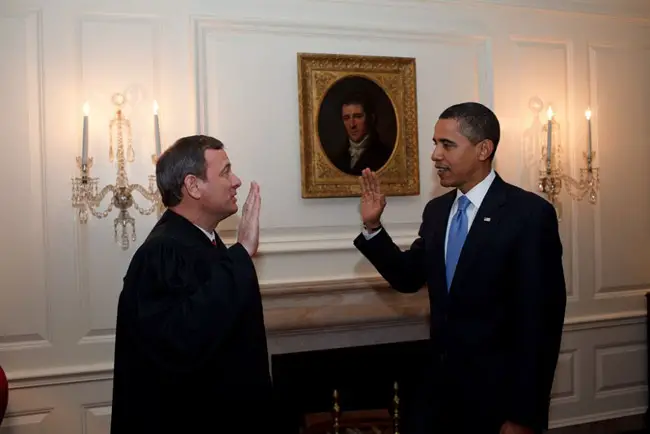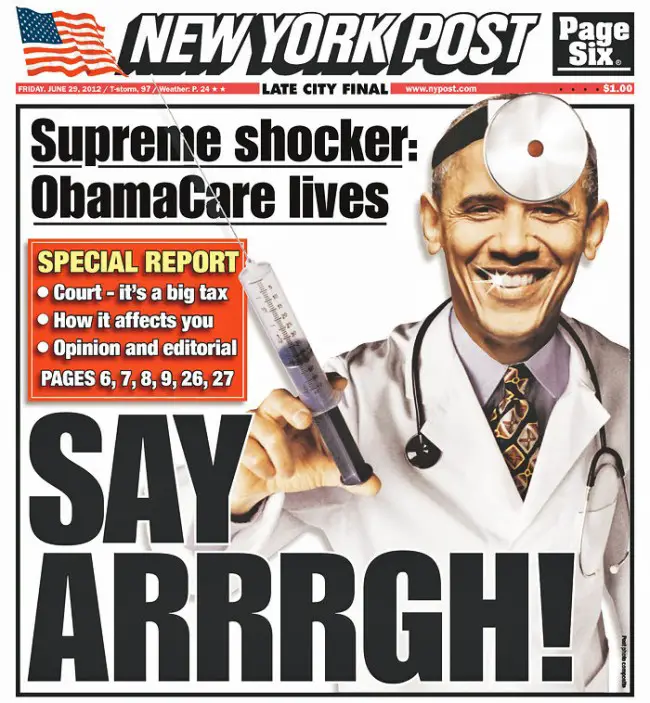
Last Updated:
The Latest From Mike Pius, Flagler’s Firefighter Survivor
Mike Pius is the decorated 29-year-old Flagler County firefighter-paramedic who was in a serious wreck while going home on his motorbike on June 19, in St. Augustine (where he lives). An 18-year-ild driving an SUV cut him off. He’s been recovering since. (See the full story here.) This week he posted a survivor’s portrait, which drew close to 100 comments of support (“Looking good Pius much better than when we saw you a week ago which is great to see!”; “Awe you will be back surfing in no time :) Miss you buddy feel better soon!!!!!!”; “Ahhh, you poor thing! So sorry, those waves aren’t going anywhere! Get to healing …. Hope you are feeling better real soon:(”
To which Mikle replied: “Thanks for all the great wishes y’all.” Here he is:

![]()
Presbyterian Appreciation
 It’s not every day that people find a Presbyterian service fun or worthy of note, but a Facebook friend in palm Coast did today, saying she “loved it.” When asked to specify the church, she wrote: She writes: “Grace Presbyterian on Royal Palm Parkway. A very quaint and very friendly church with about 50 in attendance. I felt like I was in the church I grew up in as a child. Love it that the Pastor has the children come sit on the stairs to the pulpit with him and gives them a catechism before they go to their church. He reads scripture and preaches from the text. Not the type church for you if you like the preacher to read a verse or two and then preacher whatever topic he feels like. Plus, he is a southern man from TN. Very warm feeling… Today’s topic was “anxiety”.”
It’s not every day that people find a Presbyterian service fun or worthy of note, but a Facebook friend in palm Coast did today, saying she “loved it.” When asked to specify the church, she wrote: She writes: “Grace Presbyterian on Royal Palm Parkway. A very quaint and very friendly church with about 50 in attendance. I felt like I was in the church I grew up in as a child. Love it that the Pastor has the children come sit on the stairs to the pulpit with him and gives them a catechism before they go to their church. He reads scripture and preaches from the text. Not the type church for you if you like the preacher to read a verse or two and then preacher whatever topic he feels like. Plus, he is a southern man from TN. Very warm feeling… Today’s topic was “anxiety”.”
![]()
Supreme, Health Caring Laughs
The fun folks at Politico put together this hilarious collection of last night’s recap of the Supreme Court’s health care decision on the comedy circuit. As always, the comedians were more pointed than the parody we know as the news media:
![]()
Chief Justice John Roberts, Transcendentalist
 From Adam Liptak in The Times: ” Chief Justice John G. Roberts Jr. has a favorite quotation from one of the giants who preceded him on the Supreme Court. Assessing the constitutionality of a law passed by Congress, Justice Oliver Wendell Holmes Jr. once wrote, “is the gravest and most delicate duty that this court is called on to perform.” In finding a way to uphold President Obama’s health care overhaul law on Thursday, Chief Justice Roberts performed the task with exquisite delicacy. That he did was a surprise from a judge whose rulings and background, including legal work in the administrations of President Ronald Reagan and the first President George Bush, suggested a conventionally conservative worldview. […] The court Chief Justice Roberts leads is not leaving the national spotlight. The next term already includes a major case on affirmative action in higher education, and cases on voting rights and same-sex marriage are likely to follow. All will test the chief justice’s leadership, and the novel alignment in Thursday’s case is unlikely to be repeated. In cases concerning the role of race in admissions and voting, he is likely to take his usual place with the court’s conservatives. In cases on gay rights, Justice Kennedy is likely to be the swing vote. But the chief justice’s defining and delicate role in upholding the health care law will always be associated with his tenure. […] The legacy of the Roberts court came into focus on Thursday, and it is one in which the chief justice serves as a sort of fulcrum and safety valve. He can pull the court back from bold action, as he did in 2009 when he persuaded seven of his colleagues to follow him in a novel interpretation of the Voting Rights Act rather than striking down its heart, as a majority of the justices had seemed inclined to do at the argument. Or he could join it in bold action, as he did seven months later when he provided the fifth vote in Citizens United, which reversed precedents, struck down part of a major law and amped up the role of money in politics. “There is a difference,” Chief Justice Roberts wrote in Citizens United, “between judicial restraint and judicial abdication.” Thursday’s health care decision tacked back in the other direction, toward restraint.” The full story.
From Adam Liptak in The Times: ” Chief Justice John G. Roberts Jr. has a favorite quotation from one of the giants who preceded him on the Supreme Court. Assessing the constitutionality of a law passed by Congress, Justice Oliver Wendell Holmes Jr. once wrote, “is the gravest and most delicate duty that this court is called on to perform.” In finding a way to uphold President Obama’s health care overhaul law on Thursday, Chief Justice Roberts performed the task with exquisite delicacy. That he did was a surprise from a judge whose rulings and background, including legal work in the administrations of President Ronald Reagan and the first President George Bush, suggested a conventionally conservative worldview. […] The court Chief Justice Roberts leads is not leaving the national spotlight. The next term already includes a major case on affirmative action in higher education, and cases on voting rights and same-sex marriage are likely to follow. All will test the chief justice’s leadership, and the novel alignment in Thursday’s case is unlikely to be repeated. In cases concerning the role of race in admissions and voting, he is likely to take his usual place with the court’s conservatives. In cases on gay rights, Justice Kennedy is likely to be the swing vote. But the chief justice’s defining and delicate role in upholding the health care law will always be associated with his tenure. […] The legacy of the Roberts court came into focus on Thursday, and it is one in which the chief justice serves as a sort of fulcrum and safety valve. He can pull the court back from bold action, as he did in 2009 when he persuaded seven of his colleagues to follow him in a novel interpretation of the Voting Rights Act rather than striking down its heart, as a majority of the justices had seemed inclined to do at the argument. Or he could join it in bold action, as he did seven months later when he provided the fifth vote in Citizens United, which reversed precedents, struck down part of a major law and amped up the role of money in politics. “There is a difference,” Chief Justice Roberts wrote in Citizens United, “between judicial restraint and judicial abdication.” Thursday’s health care decision tacked back in the other direction, toward restraint.” The full story.
Dana Milbank in the Post: “Whatever one thinks of the health-care ruling, Roberts’s opinion was extraordinarily brave. It was the biggest case yet for the young Roberts Court, and expectations on both sides were that the chief justice and the four other conservatives would deliver a majority opinion consistent with their political preferences — much as the Rehnquist Court did in Bush v. Gore. But Roberts chose a different path. He forged a middle ground that spared the nation the political crisis that would have come from striking down the president’s signature legislative achievement. In the process, Roberts went a long way toward reestablishing the legitimacy of the court, which could have importance far beyond health care. The justices’ standing is in serious jeopardy — in a recent Gallup poll, only 37 percent of Americans had a high degree of confidence in the Supreme Court — but the chief justice gave a powerful rebuttal to skeptics who believe the justices are politically motivated.”
![]()
The New York Post’s as-always-priceless cover on the biggest story of the decade:

Marco Rubio On the Daily Show
“Here’s where the rubber meets the road,” Jon Stewart tells a thoroughly outmatched Marco Rubio, who claims obstruction at every Democratic turn. “The Republicans have a problem with everything. So then nothing gets passed.” Rubio, of course, disagrees. Them, when asked how one reduces the deficit, his only answer was: “grow the economy.” A theory disproved for 32 years (going back to the cataclysmic budget years of the Reagan era) is still the best Rubio can do. It’s really like talking to a wind-up doll. Here’s the full, extended interview in three parts.
Part 1:
Part 2:
Part 3:
![]()
The New Republic’s Vision of Britain
 The New Republic’s latest issue is a counterpoint to The Economist’s. Where the Economist devotes a lavish couple of dozen pages to the resurgence of London as the world’s “most international city,” the New Republic takes a dimmer view of the old empire in a series of articles anticipating the orgiastic non-event known as the Summer Olympics, four weeks from now. Aleksandar Hemon, for example, writes about the dismal spectacle that English football has become: “But even before the lads get on the pitch, there is often much at which to be appalled. In October 2011, John Terry, the star and the captain of Chelsea, was leading his team in a Premiership game against Chelsea’s local rivals, Queens Park Rangers (QPR), when Terry was alleged to have called the QPR player Anton Ferdinand a “fucking black cunt.” In Britain, that is prosecutable as “racially abusive language,” for which Terry was charged in December 2011. Terry denied the charges, but it is easy to find a YouTube clip from which it is clear what sort of sentiment he was eager to express. The trial, however, was postponed, because it would have distracted the lad from his duties with the English national team. Terry was its captain at the time, and, because captaincy carries a lot of weight in English soccer, the English Football Association (FA) decided in February to strip him of it. The FA did so over the head of the national team manager, Fabio Capello. Not to be outdone by his players at tantrums, he threw one of his own and submitted his resignation. Terry had already been stripped of captaincy once before. A few months before the 2010 World Cup, it had transpired, thanks to diligent tabloid work, that Terry had sex with Vanessa Perroncel, a lingerie model and the ex-girlfriend of Terry’s Chelsea and English squad teammate Wayne Bridge, who has a child with her.
The New Republic’s latest issue is a counterpoint to The Economist’s. Where the Economist devotes a lavish couple of dozen pages to the resurgence of London as the world’s “most international city,” the New Republic takes a dimmer view of the old empire in a series of articles anticipating the orgiastic non-event known as the Summer Olympics, four weeks from now. Aleksandar Hemon, for example, writes about the dismal spectacle that English football has become: “But even before the lads get on the pitch, there is often much at which to be appalled. In October 2011, John Terry, the star and the captain of Chelsea, was leading his team in a Premiership game against Chelsea’s local rivals, Queens Park Rangers (QPR), when Terry was alleged to have called the QPR player Anton Ferdinand a “fucking black cunt.” In Britain, that is prosecutable as “racially abusive language,” for which Terry was charged in December 2011. Terry denied the charges, but it is easy to find a YouTube clip from which it is clear what sort of sentiment he was eager to express. The trial, however, was postponed, because it would have distracted the lad from his duties with the English national team. Terry was its captain at the time, and, because captaincy carries a lot of weight in English soccer, the English Football Association (FA) decided in February to strip him of it. The FA did so over the head of the national team manager, Fabio Capello. Not to be outdone by his players at tantrums, he threw one of his own and submitted his resignation. Terry had already been stripped of captaincy once before. A few months before the 2010 World Cup, it had transpired, thanks to diligent tabloid work, that Terry had sex with Vanessa Perroncel, a lingerie model and the ex-girlfriend of Terry’s Chelsea and English squad teammate Wayne Bridge, who has a child with her.
[…] IT IS TEMPTING to interpret the recurring delusion of the English national team’s unfulfilled potential by relating it to the delusion of the bottomless pool of British greatness, which is, of course, a mutation of imperial nostalgia. But the more prosaic, and reasonable, interpretation is that the establishment of the Premiership and its economic structure in 1992—which resulted in rivers of money flowing from TV rights and increased ticket prices—brought about a transformation of soccer from working-class pastime to front-page-friendly entertainment, made available to the affluent middle class and the sorry remnants of the working class by Rupert Murdoch’s News Corporation. Soccer is, in many ways, the bread and butter of the tabloid universe, for which the players are rewarded with caviar and constant attention. They see themselves magnified in the mirror of inflated wages and screaming front pages. Without enlarging their importance (in the sense of “penis enlargement”), there would be nothing to talk about, as there would be no lad and WAG culture. The whole thing—the financial structure of the Premiership, where most of the clubs are deep in the red; the overvalued players; the overblown potential of the national team—is a bubble. The perpetuation of delusion is partly driven by the fear of its bursting.”
![]()
Kandinsky in the Act
From a September 2009 Times review of Kandinsky’s show at the Guggenheim that year: “The impact of his thought on his contemporaries was tremendous. It is always startling to learn, for example, that Hugo Ball and the Zurich Dadaists revered Kandinsky, included his paintings in their exhibitions and read his poetry at their soirees. Some of these poems are virtual prescriptions for performance art. For example, “Not,” in his collection “Sounds” (1912), describes a “jumping man” who “dug a small very round depression” in the ground and “jumped over it without stopping every day from 4 o’clock to 5.” More than a few gallery receptionists of the moment have witnessed things like that. Kandinsky was alternately propelled by ambition and history itself. By 1901, barely six years after the combined experiences of a Monet “Haystack” and Wagner’s “Lohengrin” jolted him, at 30, to leave Russia for art study in Munich, he had rebelled against the academy and organized like-minded colleagues into the Phalanx. He would go on to become the founding president of the New Artists Association in Munich in 1909. Two years later, when that body chafed at his abstract tendencies, he left to form the Blue Rider group with, among others, the painters Franz Marc, Alexej von Jawlensky and Gabriele Münter, for whom he had left his first wife in 1907. The outbreak of World War I forced him back to Russia, where he joined the Constructivist experiment, as well as the government bureaucracy. In 1921 he and his new wife, Nina, repaired to Berlin, pushed by physical privation and the rejection of Kandinsky’s teaching ideas. By 1922, he was teaching at the Bauhaus and living next door to his great friend Paul Klee. But this idyll ended when the Nazis closed the school in 1933. Then it was on to Paris, the last stop, where he worked, despite increasingly scant art supplies, until his death in 1944.”
Here he is in a video, caught in the act:




























Leave a Reply